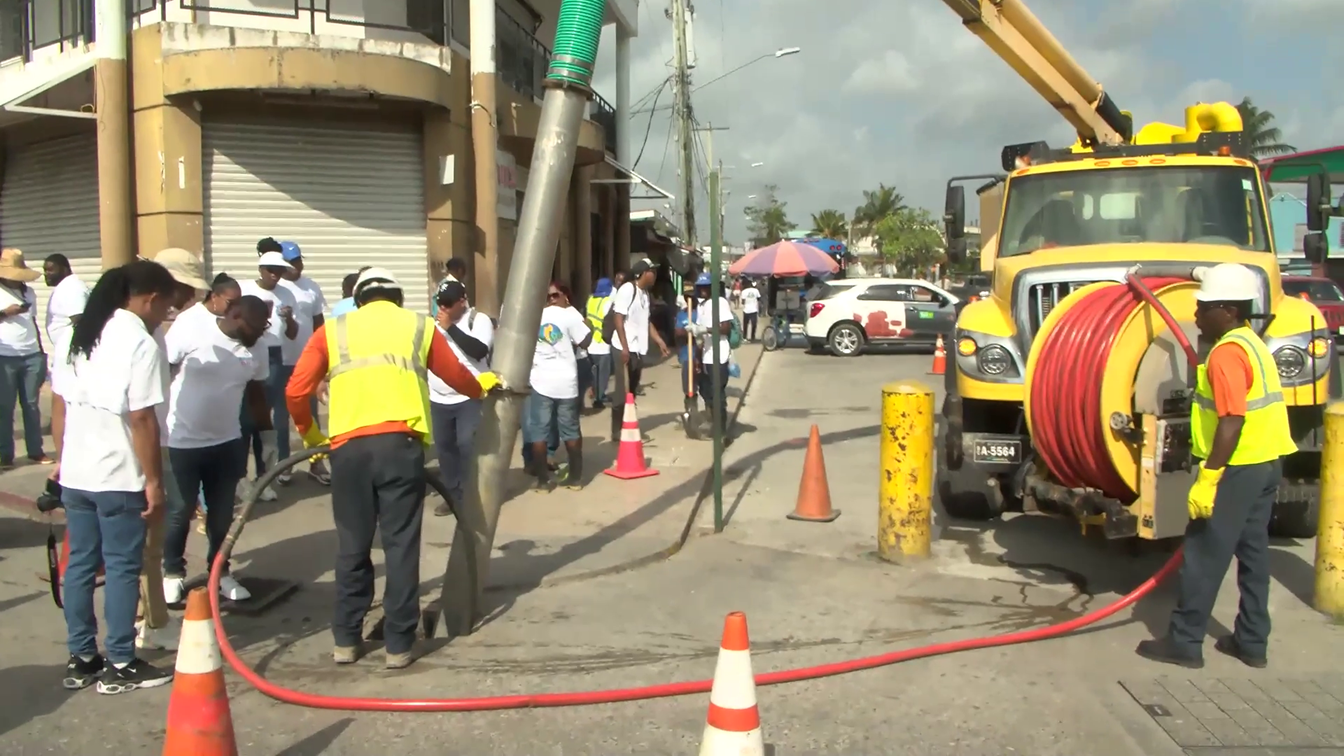From the comfort of air-conditioned offices to the gritty reality of Belize City’s drains, Mayor Bernard Wagner and his councilors rolled up their sleeves and got their hands dirty today. With the 2025 Atlantic Hurricane Season fast approaching, the Belize City Council is stepping up its flood mitigation efforts. This morning, staff gathered at Constitution Park before fanning out across the city—led by the mayor himself—to clean drains and clear debris. It’s a job usually left to sanitation and maintenance crews, but today, elected officials joined the front lines. So, what kind of impact did their presence really make? And how is the council preparing for what could be another intense rainy season? News Five’s Paul Lopez has the story.
They’re usually behind desks in the cool comfort of City Hall, but today, Mayor Bernard Wagner and his councilors traded office chairs for rubber boots. Armed with gloves and grit, they hit the streets to help clean out drains across Belize City.
Bernard Wagner, Mayor, Belize City
“What we normally have prior to the rainy season is a symposium. So I told my CEMO liaison officer, Melonie, let us do something outside of the box this year. Instead of going in a conference room sitting out and having a symposium, let us go into the ground, get with hands dirty and really put in the work for the people. This is what you call community. It is community at its best.”
Kaya Cattouse, Councilor, Sanitation Department
“As you know the hurricane season is June to November, every year in December the sanitation and maintenance team at the Belize City Council start our preparation for the upcoming year. So, we are on the ground digging drains. The issue here in Belize City is that it is below seas level. So, when it rains it will definitely flood. Our job here is to ensure that the flood subsides as soon as the rain stops.”
And while the gloves came out, our cameras did not really capture these elected officials doing much work. To be fair, here is Councilor Cattouse briefly clearing some dirt before handing over the shovel. Councilors Javier Castellanos and Sherwin Garcia were caught assisting to remove a grill. Councilor Garcia once again showed he is not afraid of a little dirt and mud, while Mayor Wagner got on his knees, on the dirty sidewalk, to assess the situation. But the real experts, those who did the heavy lifting, are the councils’ sanitation and maintenance teams.
“Is all the fan fair necessary to clean drains across the city?”
Kaya Cattouse
“It just shows our commitment; at the council we are hands on councilors. This is what we do on a regular basis, whether the cameras are here or not.”
Javier Castellanos, Councilor, Belize City
“We were prepared already, but this one is the final one touch that the mayor said we are going to finish it off to make sure everything is on time and everything is prepared so we can be able to have that opportunity so if any disaster comes we are already halfway in it.”
The Belize City Council admits that while clearing drains definitely helps, it’s not a magic fix. Some neighborhoods will still see water rising during heavy rains and that’s because much of the city actually sits below sea level. But there’s a silver lining: the goal is to keep those floodwaters moving. So even if the streets fill up, the hope is that once the rain stops, the water will drain away quickly, keeping damage to a minimum.
“We want to ensure that all our drains are cleared of debris, they are connected, reshaped, connected to the canal, they are flowing to the canal, the canal is flowing to the river and the river to the sea. We know we have an issue at the Dean Street Area, Berkley Street, and East Collet Canal. Those are focus areas. We have issues on Queen Street, by the gas station on Freetown Road. Those are key areas. We have the sludge trucks with us today, two sludge trucks which are really getting in those drains and suck out all the sludge and debris in those areas.”
The positive impact of this cleanup effort will only be realized when the rains come. Forecasters are already predicting an above average hurricane season. Reporting for News Five, I am Paul Lopez.
